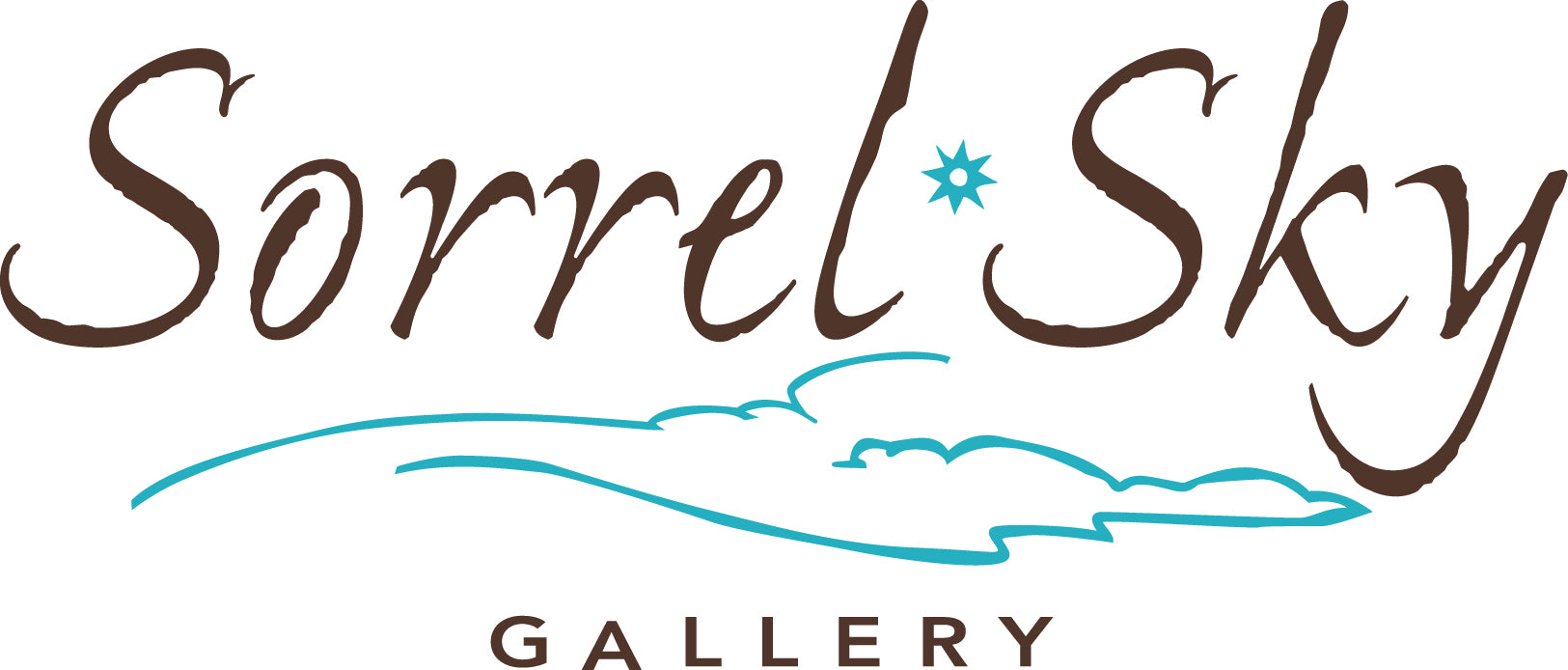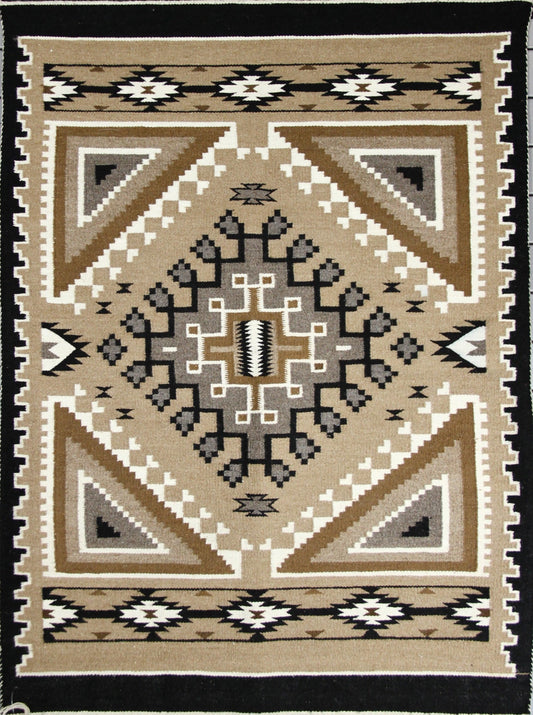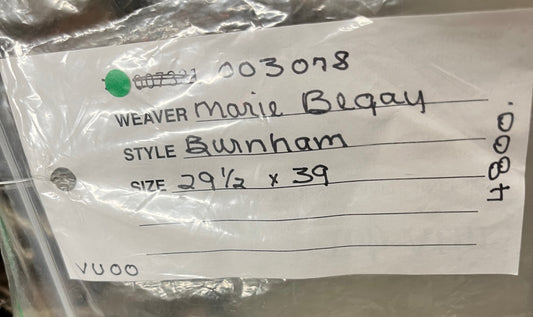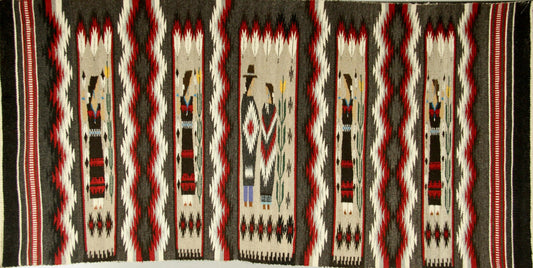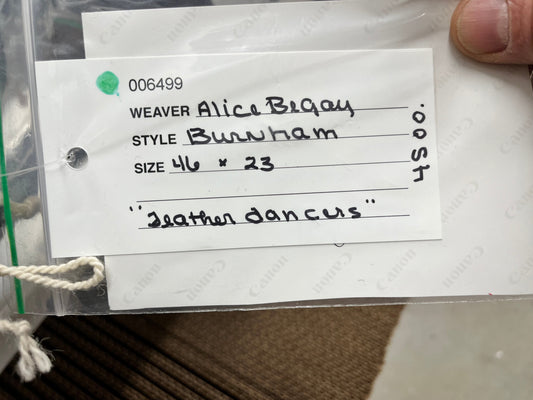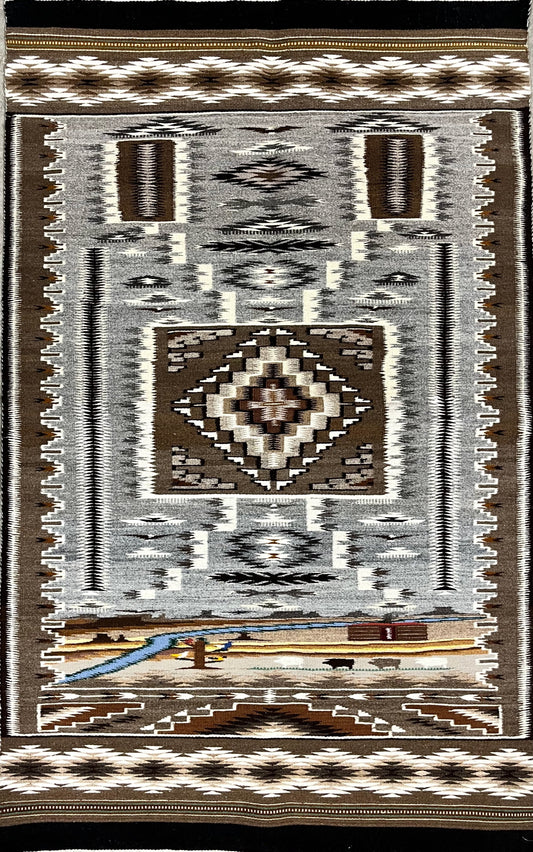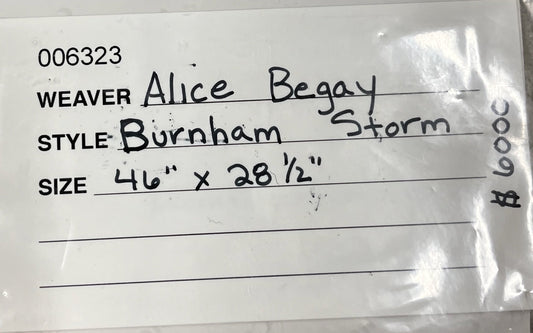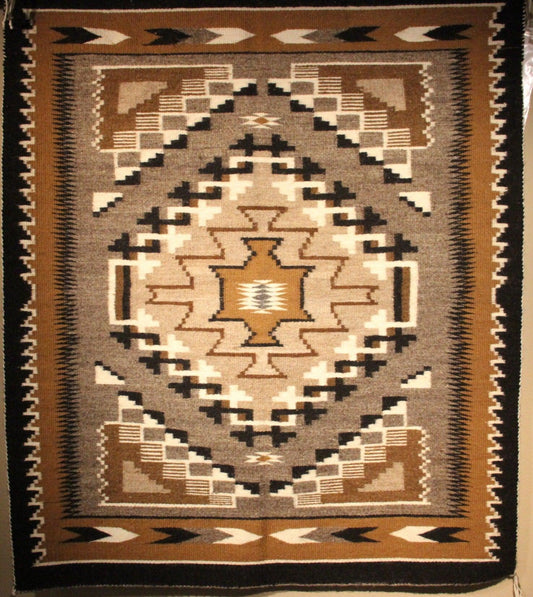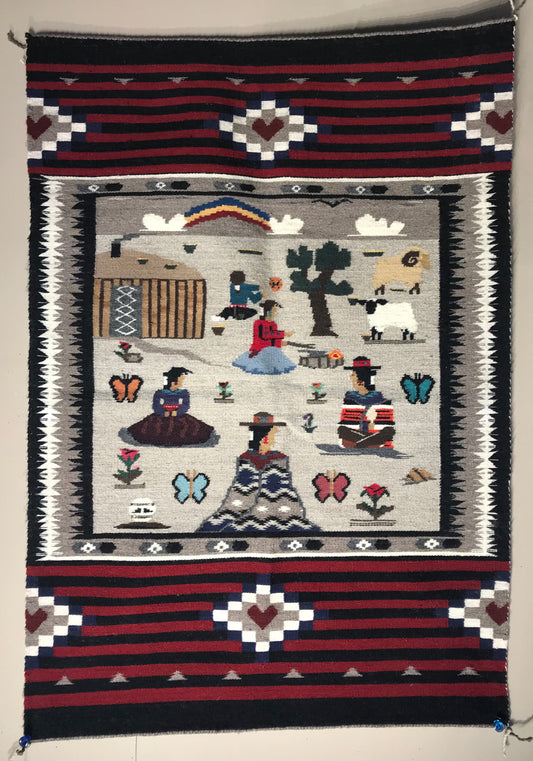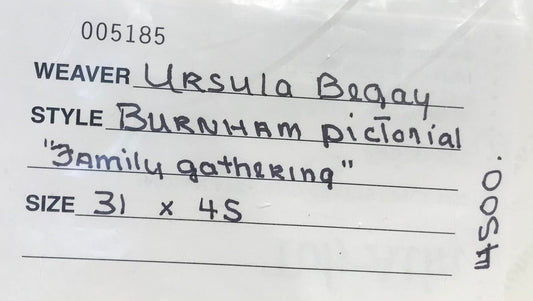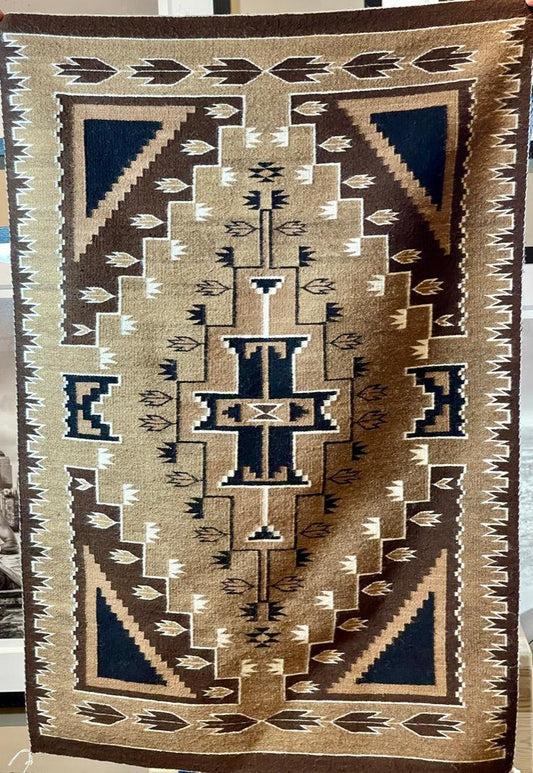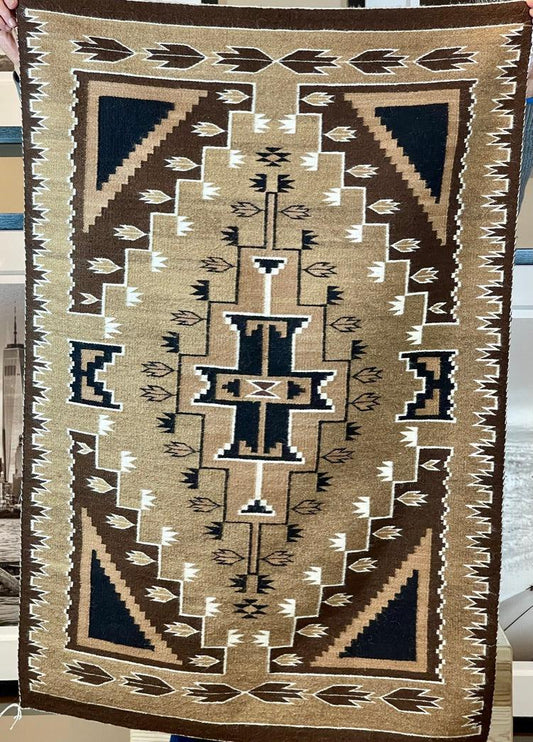Collection: Burnham Area Weavings
-
Vendor:Navajo Weaving
Burnham Style Weaving - Marie Begay
Regular price $ 4,800.00Regular priceUnit price per -
Vendor:Navajo Weaving
Burnham 23" x 46" - 6499
Regular price $ 4,500.00Regular priceUnit price per
No More Products
-
Sold
-
Sold
-
Sold
-
Sold
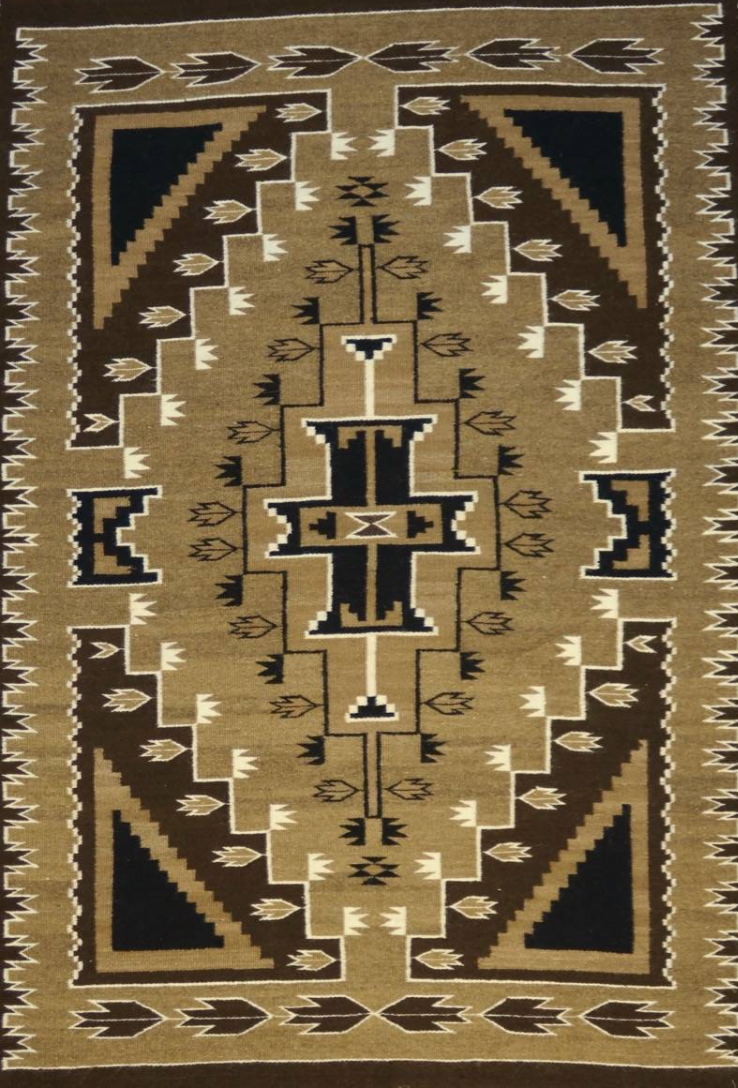
The Burnham area was one of the last weaving areas to evolve. They are named for the Burnham Chapter Area, and Bruce Burnham’s Grandfather, at one time, had the local trading post. The weaving styles found in this area included Yeis, geometric patterns, and Two Grey Hills. In the early 1970s, a group of five sisters, Helen, Sandy, Alice, and Marie Begay, and their older sister, Anna Mae Barber, began to weave a unique style of rug that combined design elements from different weaving areas, including pictorial elements, that were woven with hand spun wool using primarily natural wool and vegetal dye colors.
Today they often include some aniline dyes for effect. Many weavers from the area have adopted their style, and the nieces, nephews, and children of the original weavers are now making these unique, one-of-a-kind pieces.
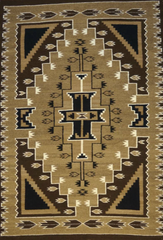
The Burnham area was one of the last weaving areas to evolve. They are named for the Burnham Chapter Area, and Bruce Burnham’s Grandfather, at one time, had the local trading post. The weaving styles found in this area included Yeis, geometric patterns, and Two Grey Hills. In the early 1970s, a group of five sisters, Helen, Sandy, Alice, and Marie Begay, and their older sister, Anna Mae Barber, began to weave a unique style of rug that combined design elements from different weaving areas, including pictorial elements, that were woven with hand spun wool using primarily natural wool and vegetal dye colors.
Today they often include some aniline dyes for effect. Many weavers from the area have adopted their style, and the nieces, nephews, and children of the original weavers are now making these unique, one-of-a-kind pieces.
